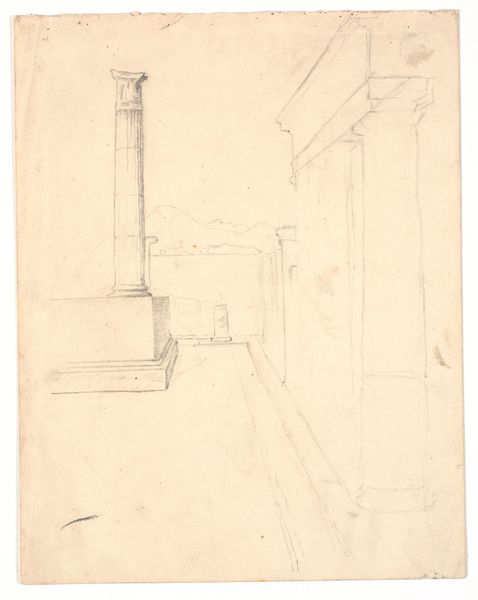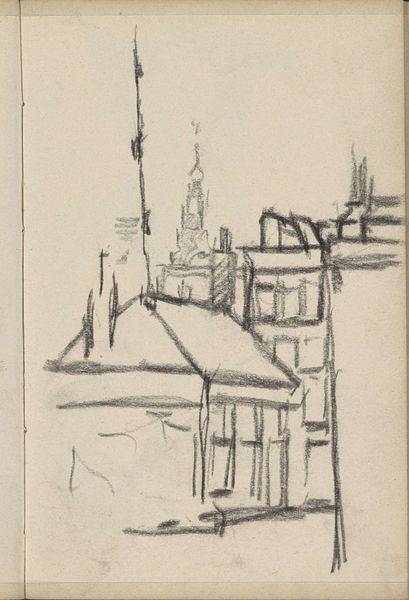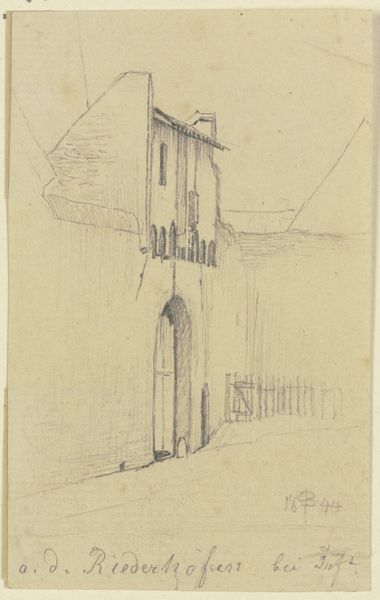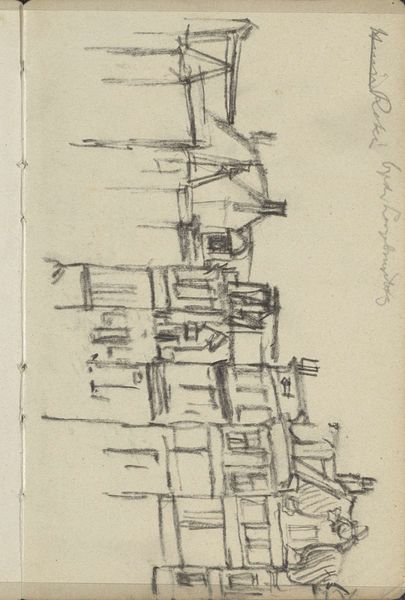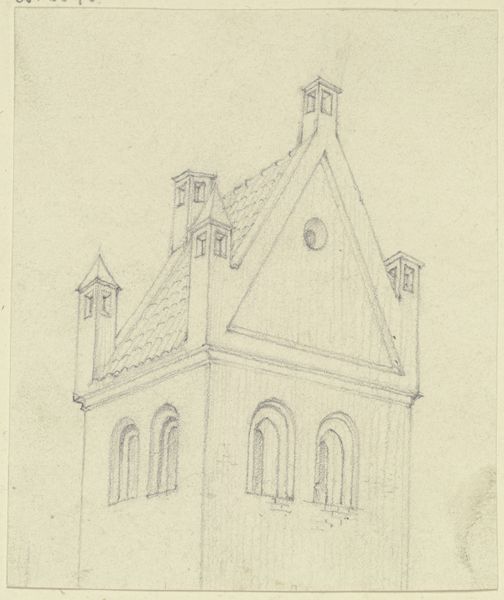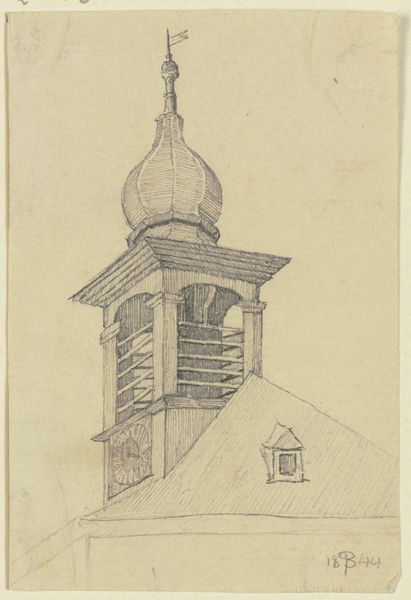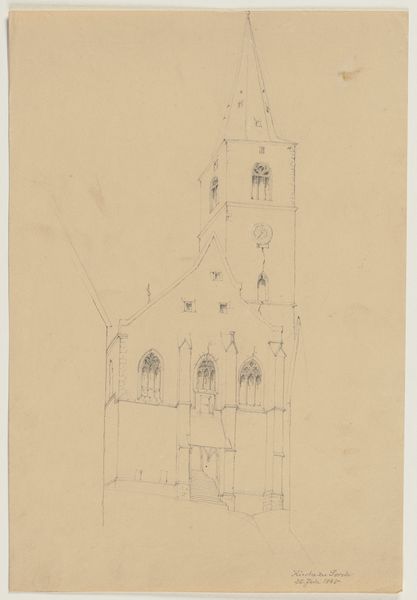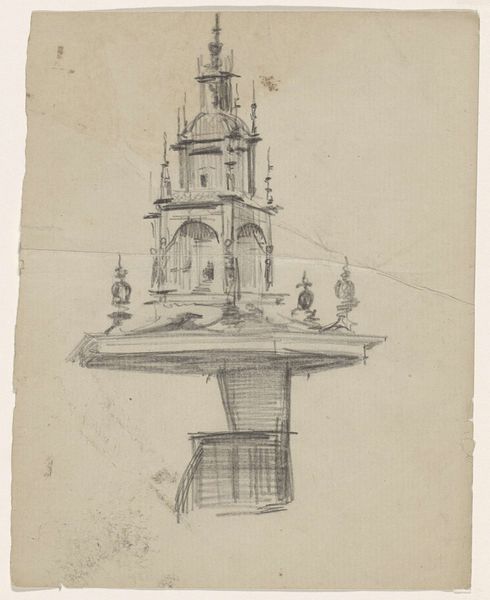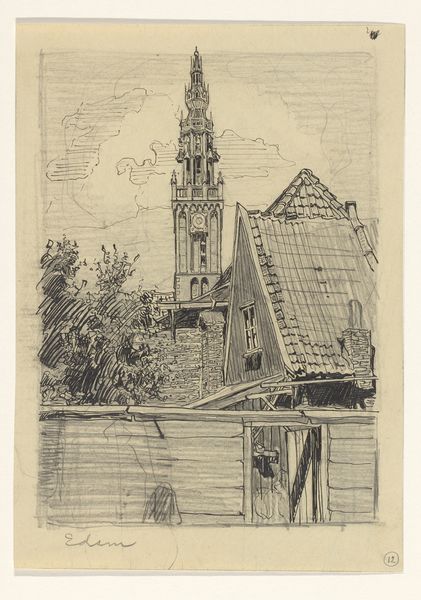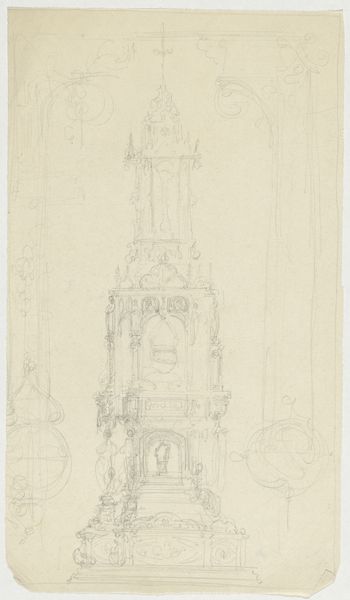
drawing, pencil
#
drawing
#
neoclacissism
#
geometric
#
pencil
#
cityscape
Dimensions: sheet: 7 3/8 x 4 5/8 in. (18.8 x 11.8 cm)
Copyright: Public Domain
Editor: Here we have "Clocktower," a pencil drawing created around 1840 by Sir Charles Barry, now residing at the Metropolitan Museum of Art. I find it striking how the geometric precision of the tower is softened by the sketch-like quality of the pencil work. How do you approach analyzing this piece? Curator: Formally, the artwork showcases Barry’s control over line and tone to evoke a three-dimensional architectural structure. The composition, with its emphasis on verticality and careful balancing of light and shadow, exemplifies neoclassicist principles in its rational order. Consider how the varying densities of pencil strokes not only define form but also suggest the textural quality of the stone. What is particularly noteworthy is the intersection of representation and materiality here. Editor: So you're saying that the medium, the pencil, is essential to how we understand the clocktower itself? Curator: Precisely. The architectural drawing operates within a defined set of conventions. But consider, how does the very nature of the pencil line - its potential for both precision and ambiguity - shape our reading of the subject? Notice, too, how the artist's signature interacts with the scene. Does its graphic presence interrupt or complement the architectural form? Editor: It adds another layer, suggesting process and the artist's hand, almost making the drawing itself an event, beyond simply being a representation. Curator: Yes, and the rough framing lines, seemingly tentative, call our attention to the artifice of representation. We witness not merely a clocktower, but also the conscious act of constructing its image on paper, a dynamic interplay between form and formation. Editor: I’m seeing now how looking closely at the pencil strokes and composition reveals so much about both the depicted object and the artist’s approach. Curator: Indeed. And hopefully, this exercise enriches our appreciation for how technique shapes meaning.
Comments
No comments
Be the first to comment and join the conversation on the ultimate creative platform.

